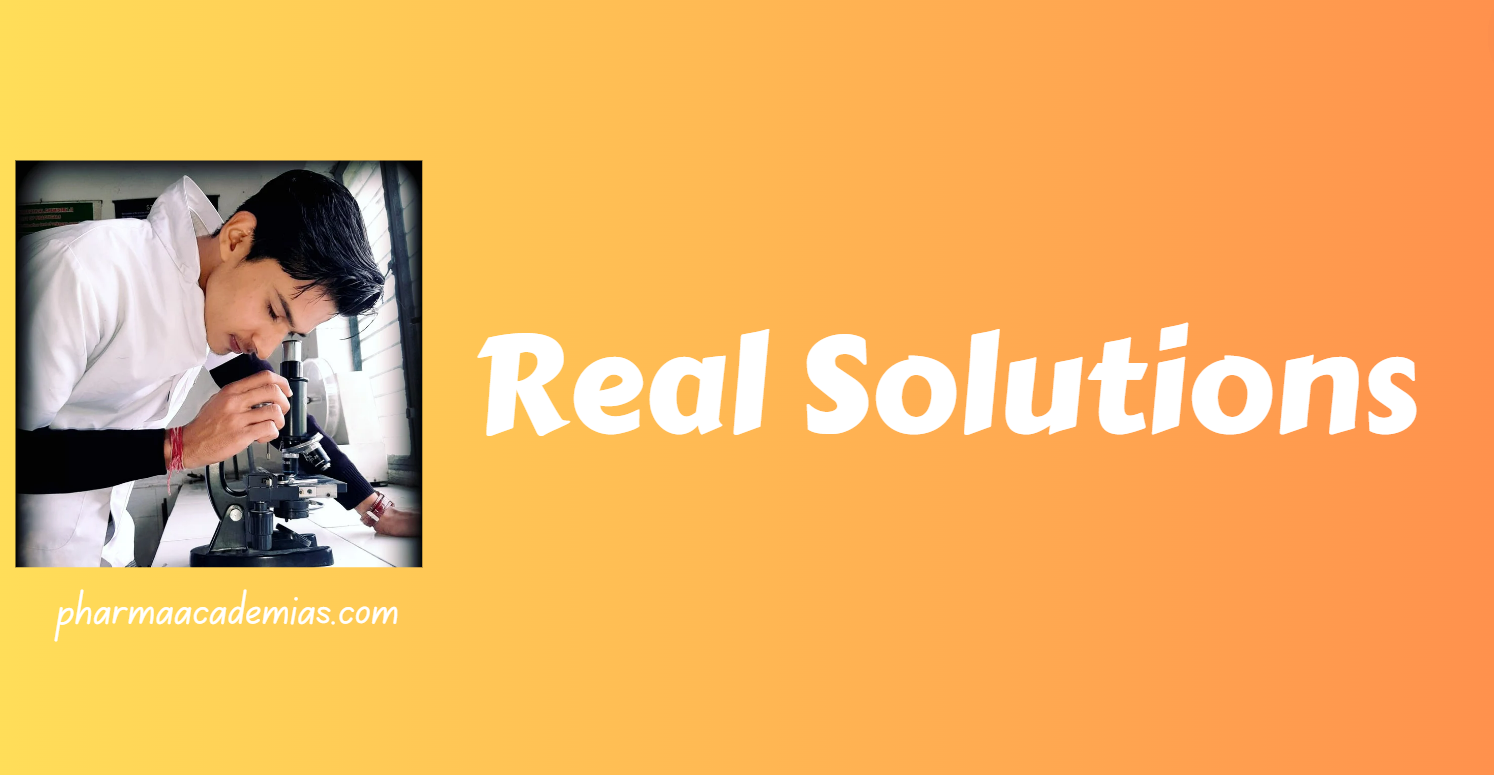Real solutions refer to mixtures where the interactions between different components deviate from the ideal behavior predicted by Raoult’s Law. Unlike ideal solutions, real solutions experience non-ideal effects due to variations in intermolecular forces, molecular sizes, and other factors influencing the behavior of the mixture.
Key Characteristics
1. Deviation from Raoult’s Law:
Real solutions deviate from Raoult’s Law, which predicts that the vapor pressure of each component is directly proportional to its mole fraction. In real solutions, the observed behavior often differs due to intermolecular interactions.
2. Types of Deviation:
Deviations in real solutions can be classified into two main types:
Positive Deviation: The observed vapor pressure is higher than predicted by Raoult’s Law. This often occurs when there are attractive forces between unlike molecules, leading to increased vaporization.
Negative Deviation: The observed vapor pressure is lower than predicted. This happens when there are repulsive forces between unlike molecules, inhibiting vaporization.
3. Factors Influencing Deviation:
Various factors contribute to deviations in real solutions, including molecular size, polarity, and the nature of intermolecular forces. These factors affect the interactions between different components.
4. Colligative Properties:
Real solutions exhibit deviations in colligative properties such as boiling point elevation, freezing point depression, and osmotic pressure. These deviations provide insights into the non-ideal behavior of the solution.
5. Temperature and Composition Dependence:
Deviations in real solutions are often temperature and composition-dependent. Changes in these parameters can influence the extent and nature of the deviation from ideality.
Examples
Positive Deviation: A common example is the mixture of ethanol and water. The attractive forces between the unlike molecules lead to enhanced vaporization, resulting in a positive deviation.
Negative Deviation: An example is the mixture of acetone and chloroform. The repulsive forces between the unlike molecules hinder vaporization, causing a negative deviation.
Significance
The study of real solutions is crucial for understanding the behavior of mixtures in practical applications. It has implications in fields such as chemical engineering, pharmaceuticals, and material science.
Real solutions provide a more accurate representation of the behavior of mixtures in real-world scenarios, considering the complexities of intermolecular interactions. Understanding deviations from ideal behavior in real solutions is essential for various scientific and industrial applications.

